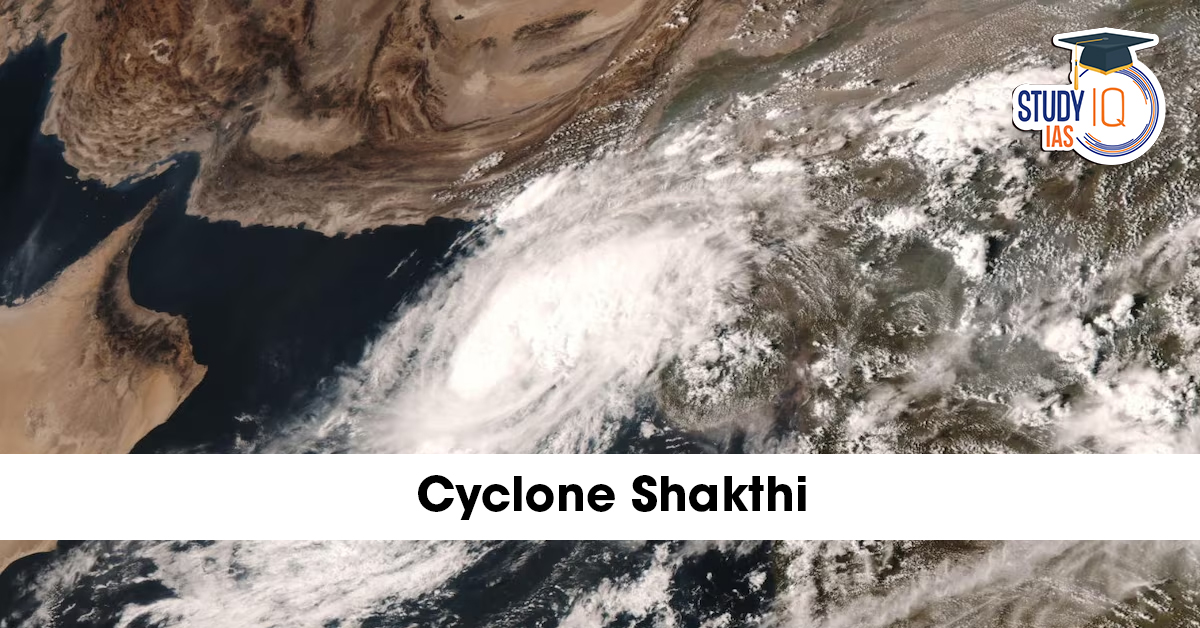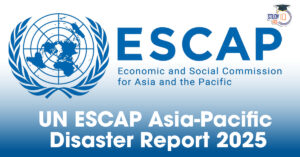Table of Contents
The India Meteorological Department (IMD) has confirmed the formation of Cyclone Shakthi — the first named cyclonic storm of the 2025 post-monsoon season in the Arabian Sea. The cyclone, which originated as a deep depression, has now intensified into a Severe Cyclonic Storm (SCS), with wind speeds reaching around 120–130 km/h near its center.
The name “Shakthi”, meaning power or strength, was contributed by Sri Lanka under the World Meteorological Organization (WMO) and ESCAP’s tropical cyclone naming system.
While Cyclone Shakthi initially raised alarms along India’s west coast, the latest IMD updates suggest that it is moving away from the Indian coastline, reducing the threat to Maharashtra and Gujarat.
Formation and Development of Cyclone Shakthi
Cyclone Shakthi formed from a low-pressure area over the east-central Arabian Sea in early October 2025. Favorable sea surface temperatures, low wind shear, and moisture convergence contributed to its rapid intensification.
The IMD upgraded the system from:
-
Low Pressure Area → Depression → Deep Depression → Cyclonic Storm (Shakthi)
By October 5, 2025, it had intensified into a Severe Cyclonic Storm (SCS).
Current Location and Predicted Path
As of the latest IMD bulletin:
-
Cyclone Shakthi is currently positioned over the northwest Arabian Sea, moving west-southwestward.
-
It is expected to head towards the coast of Oman, before gradually weakening over open waters.
-
The storm is not expected to make landfall in India, although peripheral effects such as high waves and light rainfall are anticipated along the west coast.
Key Regions Under Watch:
-
Gujarat Coast: Kutch, Dwarka, and Porbandar districts
-
Maharashtra Coast: Mumbai, Ratnagiri, and Sindhudurg
-
Union Territories: Diu and Daman
IMD Warnings and Alerts
The India Meteorological Department (IMD) has issued the following advisories:
1. Fishermen Warnings
-
Fishermen are advised not to venture into the Arabian Sea, especially the north and central sectors, until further notice.
-
Coastal security agencies have been put on high alert.
2. Sea Conditions
-
The sea will remain rough to very rough, with waves reaching 3–4 meters in height.
-
Ports in Gujarat and Maharashtra have been advised to take precautionary measures.
3. Rainfall Alerts
-
Light to moderate rainfall with gusty winds is expected along the Maharashtra and Gujarat coasts from October 6–8.
-
The IMD clarified that Cyclone Shakthi does not pose a direct threat to the mainland.
Expected Impact of Cyclone Shakthi
While Cyclone Shakthi is moving away from India, its indirect effects could still influence weather conditions across western India.
| Impact Area | Expected Effect |
|---|---|
| Maharashtra & Gujarat | Light to moderate rainfall; rough sea conditions |
| Konkan Coast | Gusty winds (40–60 km/h) and cloudy weather |
| Marine Ecosystem | Temporary rise in sea levels; risk to small fishing boats |
| Desert & Arid Regions | Slight humidity increase and altered wind patterns |
Cyclone Naming and Regional Significance
Cyclone names in the North Indian Ocean region are decided by countries under the WMO/ESCAP Panel on Tropical Cyclones.
The name “Shakthi” was proposed by Sri Lanka and symbolizes energy and resilience, reflecting the storm’s strength.
Other countries in the panel include India, Bangladesh, Pakistan, Oman, Maldives, Myanmar, Thailand, and Iran, among others.
Scientific Insights: Why Cyclones Form in the Arabian Sea
The Arabian Sea has seen a rise in cyclonic activity in recent years due to:
-
Warming sea surface temperatures caused by climate change.
-
Moisture-laden winds during monsoon transition phases.
-
Favorable atmospheric conditions like low wind shear and upper air divergence.
Historically, the Bay of Bengal generates more cyclones than the Arabian Sea, but recent patterns show a shift westward, making the Arabian Sea more active and risk-prone.
Precautionary Measures for Coastal Areas
The government and disaster response teams have issued safety advisories for coastal residents and fishermen:
-
Avoid venturing into the sea until official clearance.
-
Secure boats, nets, and coastal infrastructure.
-
Stay updated through IMD bulletins and official news channels.
-
Avoid rumor circulation and misinformation on social media.
Recent Cyclones Over the Arabian Sea
| Cyclone Name | Year | Origin | Landfall / Path |
|---|---|---|---|
| Biparjoy | 2023 | Arabian Sea | Hit Gujarat Coast |
| Tej | 2023 | Arabian Sea | Moved toward Oman & Yemen |
| Shaheen | 2021 | Arabian Sea | Landfall in Oman |
| Shakthi | 2025 | Arabian Sea | Moving away from India toward Oman |
Conclusion
Cyclone Shakthi serves as a reminder of the growing climate challenges in the Arabian Sea region. While this storm may not have a major landfall impact on India, its formation reflects the increasing frequency and intensity of tropical cyclones driven by global warming.
The coordinated efforts of IMD, coastal authorities, and disaster management teams have ensured preparedness, minimizing potential loss and panic. As India continues to strengthen its early warning systems, timely awareness and community response remain key to resilience in the face of natural disasters.


 UN ESCAP Asia-Pacific Disaster Report 20...
UN ESCAP Asia-Pacific Disaster Report 20...
 Rare Hawfinch Sighting in Corbett Nation...
Rare Hawfinch Sighting in Corbett Nation...
 Bnei Menashe Community : The Lost Tribe ...
Bnei Menashe Community : The Lost Tribe ...

























